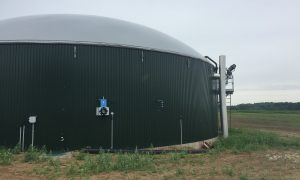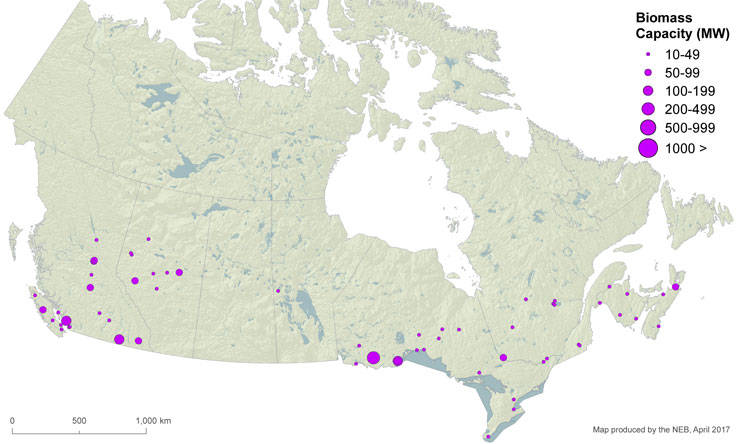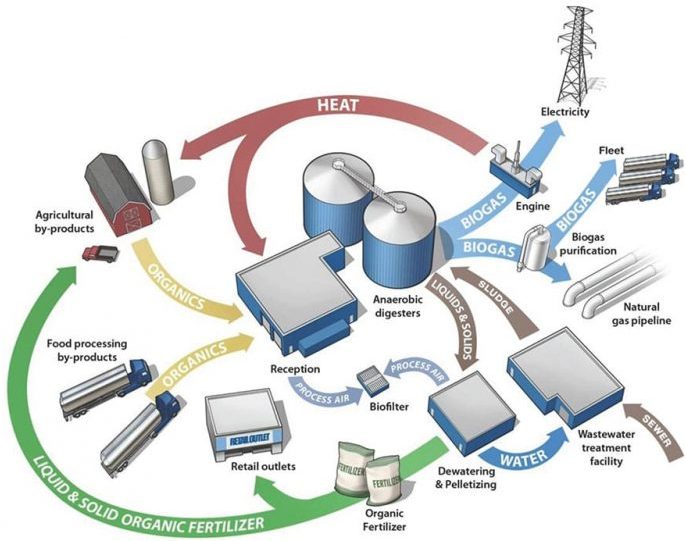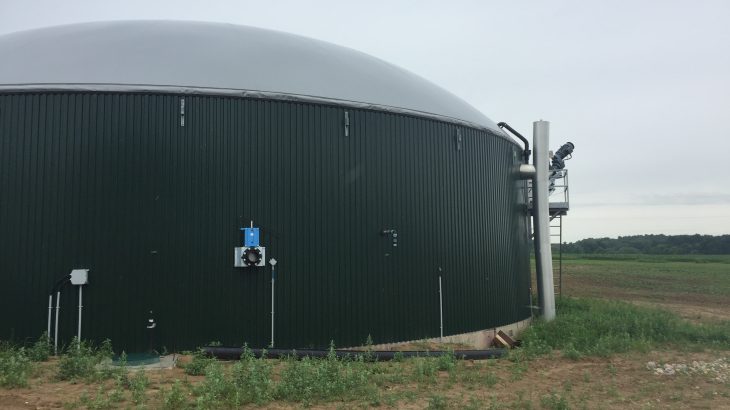Kirsten Grant, General Science co-editor

An on-farm anaerobic digester producing biogas from dairy manure and food waste. Photograph by Kirsten Grant.
On a dairy farm in southern Ontario, two large green silos sit beside the barn. Called anaerobic digesters, their contents smell like a mix of manure and rotting food waste. But there is more than a smelly concoction inside these oxygen-deprived tanks – microbes are at work breaking down organic materials to create biogas, a renewable source of energy.
Biogas is predominantly composed of methane and can be used in place of natural gas in current infrastructure. Unlike other renewable energy sources, biogas is ideal for producing power to meet base-load energy demands. The methane produced has a low density, and can be easily piped to where it’s needed. Alternatively, it can be turned into electricity on-site. Another renewable energy source, cellulosic ethanol, requires similar organic inputs during production, but yields a higher density liquid fuel that is more suitable for fueling vehicles. These fuels are part of a suite of alternatives that will be important for bridging the gap between the fossil fuels currently in use and sustainable alternatives.
At the moment, there are over 100 biogas facilities in Canada producing three per cent of Canada’s natural gas demand, or 1.3 per cent of the nation’s electricity demand. These facilities are scattered across the provinces, concentrated in southern Canada, with most in British Columbia, Ontario and Quebec. To produce electricity, large Canadian cities are manufacturing biogas from biosolids from wastewater treatment and organics separated in the home, or by capturing renewable natural gas from landfills. In agricultural areas, biogas production is based primarily on manure.

Location and capacity of biogas operations in Canada. Source: Canadian National Energy Board
There are two main methods of producing biogas: anaerobic digestion and gasification. Anaerobic digestion functions like a stomach, producing methane by fermenting wet organic inputs. These digesters are equipped with specialized microbial communities that are effective at producing gases from specific types of organics. After the organics have been digested, the leftover material is still rich in nutrients and can be used as fertilizer. The second method, gasification, is a thermochemical process that involves heating dry organic material in an oxygen-deprived environment so that it undergoes partial combustion, producing a synthetic gas. As gasification does not rely on microbes, it is better able to handle multiple input types. Choosing a production method depends on available organic wastes, and specific end uses for the heat and power produced.
Left in landfills, sewage treatment plants, and manure piles, organic material releases methane and carbon dioxide – greenhouse gases – as it decomposes. When these organics are used as inputs in biogas production, greenhouse gases that would otherwise be released into the atmosphere are diverted to create power. In Canada today, significant amounts of organic material are being wasted and are contributing to pollution because it is cheaper and easier than managing them. For example, there have been many cases of sewage being dumped into rivers and lakes from Canadian cities, polluting our waterways. With the proper production facilities in place, these organic wastes could be used to curb our fossil fuel dependency. Biogas production provides an opportunity to manage these organic waste problems, while producing renewable power.

Cycle of biogas production, creating electricity and natural gas from organic inputs. Source: Canadian Biogas Association
However, biogas production is not without its challenges. Initial investment required to set up biogas production facilities can be high, and varies with the size of the facility. Although operators earn money from selling the power they produce, the amount varies with current energy prices. And there is the problem of ensuring that quality organic inputs are available over the long-term. Finally, fuel costs associated with transporting materials to production facilities can be high. So, biogas production is most economical when situated near a fuel source. Despite these challenges, biogas production is increasing globally and in Canada.
Opportunities in biogas production are still emerging. Recently, three Canadian companies were awarded funds to optimize fertilizer production from the digestate left over from biogas production. Other areas of research include exploring pre-treatment of sewage inputs to maximize efficiency within anaerobic digesters.
If we want a future with sustainable energy production, then biogas is one important piece of a larger suite of renewable energy sources that will help us get there. Biogas also offers a solution to some of the organic waste problems facing urban and rural Canadian communities, while providing reliable power compatible with existing infrastructure.
We need to put our waste to work for us. Are your organic wastes, like wastewater and food waste, being used to their full potential?
~30~




